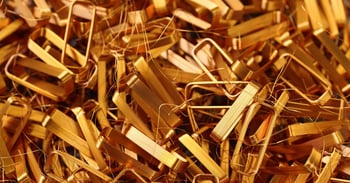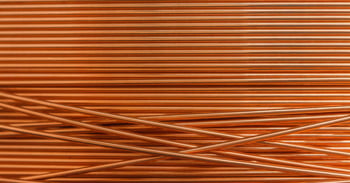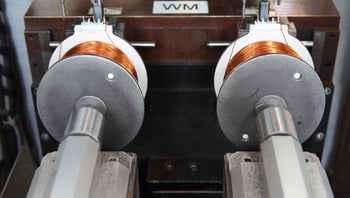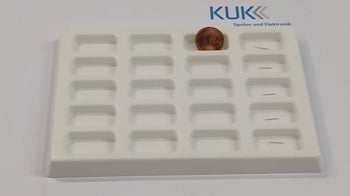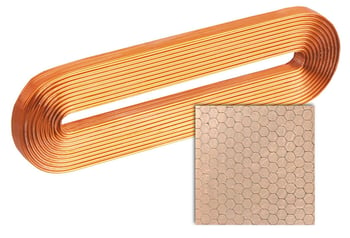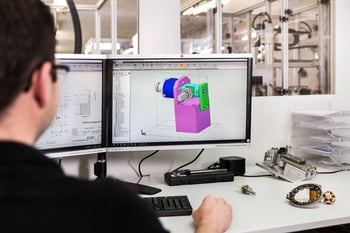Myths and facts on edgewise windings
While edgewise coils are gaining popularity among engineers for their optimal properties in specific applications, they are not necessarily the top choice compared to traditional round wire coils. Engineers can maximize the benefits of edgewise coils by carefully considering factors like wire availability, manufacturing complexity, and performance advantages, allowing them to effectively navigate any challenges in the sourcing and production processes.

The performance of electric coils depends on various factors, including the type of wire used for winding. Traditionally, round wire has been the preferred choice for coil winding. However, the emergence of edgewise coils wound with flat wire has introduced new possibilities and considerations in coil design and manufacturing.
Flat wire doesn't mean edgewise coil
Let's debunk a common misunderstanding: Simply because a coil is wound with flat wire does not automatically mean it's been wound on edge. Flat wire can also be wound on the wide side, utilizing processes similar to those used for round wire. This typically results in a quick cycle time at a relatively low cost.
Depending on the application, flat wire offers some distinct advantages over round wire. As the name suggests, flat wire has a rectangular cross-section, which allows for a higher packing or filling factor compared to round wire. This means that more turns can be accommodated within the same physical space, resulting in increased power density and improved efficiency of the coil. That's true especially for coils designed with one layer.
Sourcing considerations
 When considering the sourcing of wire for coil winding, there are some important differences between round wire and flat wire. Round wire is widely available from various suppliers and manufacturers. It can be easily sourced in different materials, such as copper or aluminum, and in different gauges. Additionally, round wire is often stocked in standard sizes and can be quickly obtained for production.
When considering the sourcing of wire for coil winding, there are some important differences between round wire and flat wire. Round wire is widely available from various suppliers and manufacturers. It can be easily sourced in different materials, such as copper or aluminum, and in different gauges. Additionally, round wire is often stocked in standard sizes and can be quickly obtained for production.
On the other hand, flat wire may require specialized suppliers or manufacturers. The availability of flat wire can vary depending on the required dimensions and material. Engineers may need to work closely with wire suppliers to ensure the desired specifications are met.
It is important to consider lead times, minimum order quantities, and potential customization requirements when sourcing flat wire for edgewise coil winding.
Edgewise coil manufacturing
Crafting edgewise coils with flat wire entails a more intricate process compared to round wire coils. The flat wire must be meticulously aligned and stacked to achieve the desired dimensions for the coil, demanding precision to maintain its uniformity and structural integrity. Specialized automation lines may be necessary for the accurate alignment and winding of the flat wire. Moreover, the winding procedure itself typically operates at a slower pace than that of round wire coils, leading to extended production cycles (see video). Additionally, the wire ends often require bending for applications like stators or motors, necessitating the use of a specialized bending tool. Furthermore, flat wire coils may undergo additional insulation and impregnation procedures to safeguard the windings and enhance the coil's overall performance and longevity.
The example of this winding line for flat wire coils is a good illustration of the significantly lower production speed of edgewise winding. Source: KUK Coils
Performance and efficiency
The use of flat wire in edgewise coils offers several performance and efficiency advantages compared to traditional round wire coils. The higher packing factor of edgewise windings allows for increased power density, meaning more power can be generated or transferred within the same physical space. This can be particularly beneficial in applications where size and weight are critical factors. Furthermore, the lower resistance and higher inductance of flat wire coils lead to reduced losses and improved efficiency.
The lower resistance results in less power dissipation as heat, while the higher inductance enables better energy storage and transfer.
These factors contribute to an improved performance and efficiency of edgewise coils in certain cases.
Does an edgewise wound coil always perform better?
No, not at all. It's important to note that thin round wire (approximately 0.3 mm and below) can also achieve satisfactory fill factors. The thinner wire diameter helps reduce the presence of air pockets between the turns. On the other hand, when it comes to edgewise coils with multiple layers, the manufacturing complexity increases and they may not necessarily outperform in terms of fill factor. While edgewise coils are ideal for high-power applications that require larger cross-sections, the scenario differs for small coils or other applications. Hence, engineers have to be aware that the performance and efficiency benefits of edgewise coils may vary depending on the specific application and operating conditions.
Conclusion for engineers on the topic of edgewise windings
 An edgewise coil is a top choice for high-power applications requiring a single layer of windings. The use of flat wire allows for a higher packing factor, meaning more turns can be accommodated in the same physical space. This results in increased power density and improved efficiency of the coil. Additionally, edgewise coils have lower resistance and higher inductance, leading to reduced losses and improved performance. However, it is important to consider the additional manufacturing steps and sourcing considerations when using flat wire.
An edgewise coil is a top choice for high-power applications requiring a single layer of windings. The use of flat wire allows for a higher packing factor, meaning more turns can be accommodated in the same physical space. This results in increased power density and improved efficiency of the coil. Additionally, edgewise coils have lower resistance and higher inductance, leading to reduced losses and improved performance. However, it is important to consider the additional manufacturing steps and sourcing considerations when using flat wire.
In conclusion, engineers should carefully evaluate the specific requirements of their application to determine whether edgewise windings with flat wire are the optimal choice. While they offer several benefits, the additional manufacturing steps and purchasing difficulties may outweigh the advantages in certain scenarios. It is crucial to consider the trade-offs and make an informed decision based on the specific needs of the application.




